Digital Advertising – Do We Need It?
At present there are more than 2.5 million digital Out-of-Home (OOH) screens the world over. 50% are located in the USA, 35% in Asian countries, the rest are in Europe. Practically all existing networks have remote access and on-line content placing capability.
With proliferation of digital LED and LCD screens they have become attractive for large corporations both as a brand recognition method and as a way to organize advertising campaigns. Previously only outdoor advertising tended to be digital. Today a digital advertising campaign may be carried out in the streets and inside public and usually crowded buildings.
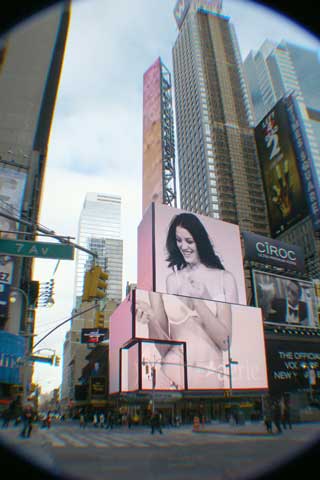 |
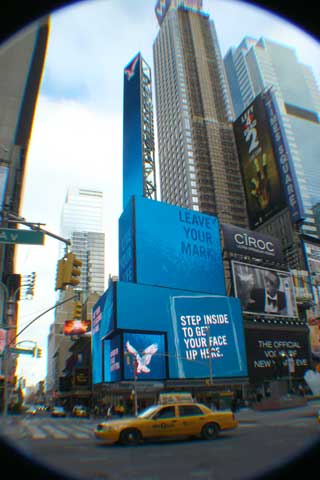 |
| Advertising LED screens in New York Times Square | |
As a result, the size of potential audience grows and the production cost of video-based content shrinks. Although video materials need to be adapted to diverse types of screens (both in software platforms, in size and dimension, at times in unusual screen shape), this creative adaptation is much cheaper and less time-consuming compared to actual production of video clips. To start a comprehensive advertising campaign one needs only to evaluate potential audience, determine broadcast cost and consumer priorities, optimize spot length and frequency on various OOH screens.
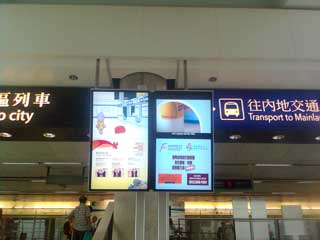 |
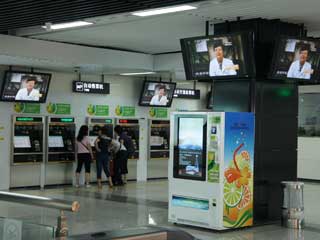 |
| Advertising LCD panels in China metro | |
A closely related topic is conducting cross-platform video campaigns on DOOH screens. As always the efficiency of an advertising campaign is determined by the audience size and frequency of displaying the brand name. Not so long ago this would apply only to the TV and printed mass media. Today the focus shifts to digital cross-platform media from outdoor LED screens to LCD panels in public buildings and on transport. Traditional advertising methods cannot provide maximum audience coverage, and campaign planners boldly experiment with new channels of advertising placement, primarily digital, since they ensure fast and highly deliverable ad campaigns.
The following companies prove that the flexible strategy to use screens of various sizes and technology is the shortest way to success:
Cross-platform screens in America
Titan Outdoor joined two digital IP projects:
- digital advertising LED screens on public busses;
- advertising LCD screens in metro and rail stations in different cities but operated from one control center.
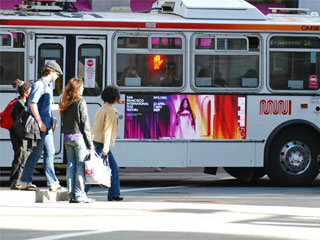 |
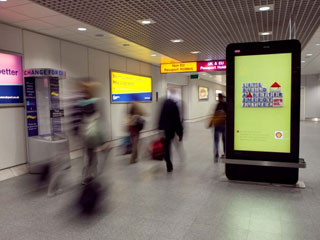 |
| Advertising LED screen on a bus Photo credit: titan360.com |
Portrait advertising LCD screen Photo credit: eye.com |
CBS Outdoor successfully runs two digital IP media projects:
- digital advertising on giant super-sites along highways in the USA;
- advertising on city screens near New York metro stations.
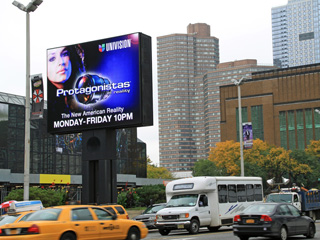 |
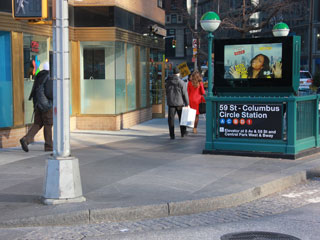 |
| Advertising LED screen in New York Photo credit: CBS Outdoor |
Advertising LCD panel at the entrance to New York metro Photo credit: CBS Outdoor |
Digital screen networks in China
Vision China Media runs simultaneously four IP media projects:
- LCD panels inside public busses;
- LCD panels in China metro passages;
- LCD panels in metro coaches;
- outdoor LED screens near metro entrances.
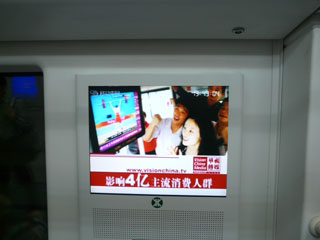 |
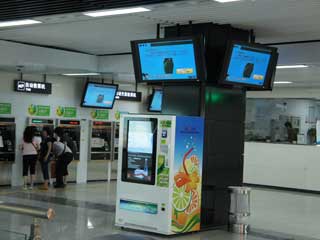 |
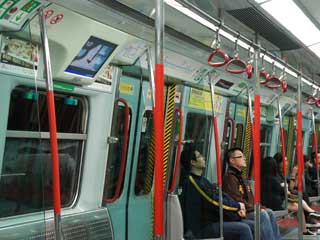 |
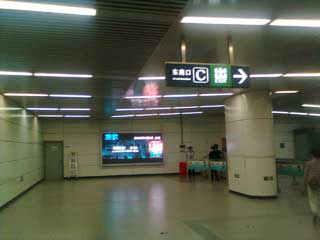 |
| Advertising LCD panels in Beijing metro | |
Phoenix Metropolis Media joined LED screen networks in different China cities. Today all networks (irrespective of the number and type of screens) are operated from one control center.
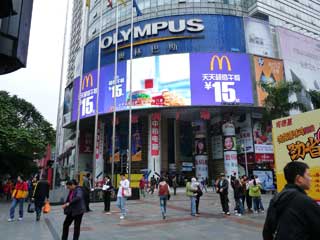 |
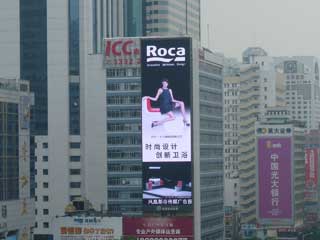 |
| Advertising LED screens belonging to Phoenix Metropolis Media | |
Digital screen networks in Russia
Russia is not an exception. 1PTV – First Popular TV and AstraVision in St Petersburg joined two digital IP media projects:
- LCD panels on public busses;
- outdoor LED screens near metro entrances.
Advantages of digital cross-platform media
Reasons for joining digital media in one project are compelling. Primarily, it’s Internet/All networks use different screens, in different locations – but all have the common denominator: Internet-based IP device.
Thus, digital networks can be operated from one control center and offer an online feedback about advertising efficiency. These cross-platform networks are the first examples of a new emerging digital IP media.
Naturally, running a multi format advertising campaign requires extensive preparatory work: integration of diverse screens in a single advertising plan, optimizing the frequency of clips on screens, receiving accurate reports etc. However the numerous advantages of this approach justify an amount of work on such planning. Digital carriers are more effective in bringing advertising to the target audience. To ensure fast return-on-investment, manufacturers and resellers must reach a specific audience. Wide coverage of a uninterested audience is of no use when the plan is to sell goods or services. In these conditions digital OOH help shift the focus to a clearly defined and well-targeted consumer groups.
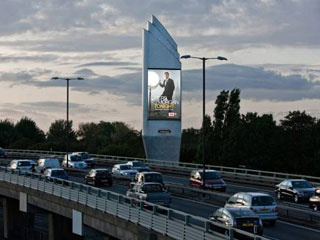 |
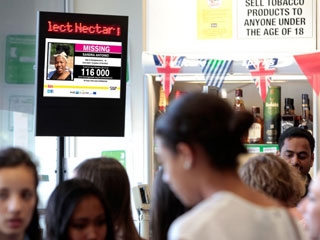 |
| Advertising LED screen in London Photo credit: ooh-tv.com |
Search for missing persons: An announcement on a network of Amscreen digital screens Photo credit: outputmagazine.com |
Moreover, DOOH allows to truly plan and run advertising campaigns across borders and continents. To start a coordinated campaign in America, Europe and Asia has become a technical matter of agreements between network operators and budgetary understanding between all players.
Up till the present time the technical capability of networks to run on-line broadcasts has been mostly in low demand. The only exception are the sports events that at times are shown on large outdoor LED screens, both permanent stationary installations and rented. This category also includes outdoor advertising zones similar to Times Square in New York where breaking news is shown on a daily basis. Nonetheless it’s obvious that the option of on-line broadcasting on modern digital video platforms will play an increasingly important role as technology matures.
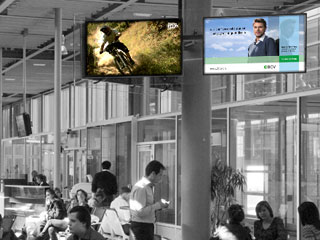 |
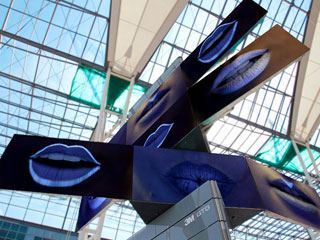 |
| Advertising screens at the Geneva airport Photo credit: neoadvertising.com |
Advertising LED screen Meta Twist Tower in the Munich airport Photo credit: metatwisttower.com |
At the same time our perception of video screens gradually changes. Consumers are used to passively watching TV screens at home and LED screens in the streets. Public places are gradually filled with LED-based media facades, projection imaging or buildings turned into screens by window-pixels at night. Additionally, the active dynamic interactive screens (touch screens and multi-screen technology) are fast entering our lives.
Naturally, the number of such projects is relatively small and they can be implemented in a limited number of public areas, usually very popular among local population. But the influence of huge screens is indelible. Some such projects are implemented within the framework of popular technological festivals www.mediafacades.eu or charitable events. Whatever the artistic affect or creative potential, such projects are prohibitively expensive and commercially untenable.
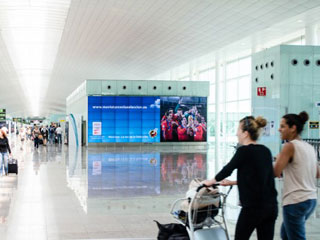 |
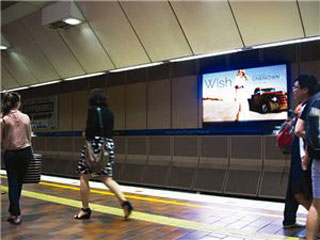 |
| JCDecaux video wall in the Barcelona airport Photo credit: digitalavmagazine.com |
One of the 34 advertising LED screens in Melbourne metro Photo credit: APN Outdoor |
Psychologists recently pointed out one more essential factor in our digital behavior that favors the expansion of the digital environment. People are gradually getting used to digital media in general. Indeed, modern people are surrounded by digital devices: PCs, netbooks, navigators, media players, play stations, ATMs etc.
As a result, our perception is tuned to digital media, we are getting more receptive to video advertising compared to printed media. This is the reason why standard billboards are gradually transferred into electronic boards and digital panels, in metro, in public buildings, even in elevators. Statistically, 30% of smart phone owners start an on-line search after seeing an interesting OOH video advert.
Since we all live in this digital era, the advertising must also be digital. This is inevitable, this is a stable tendency supported by fast progress in digital technologies. The screens are getting bigger in size and better in quality, more energy-saving and environment-friendly. What a pleasure to watch advertising on such good screens!





